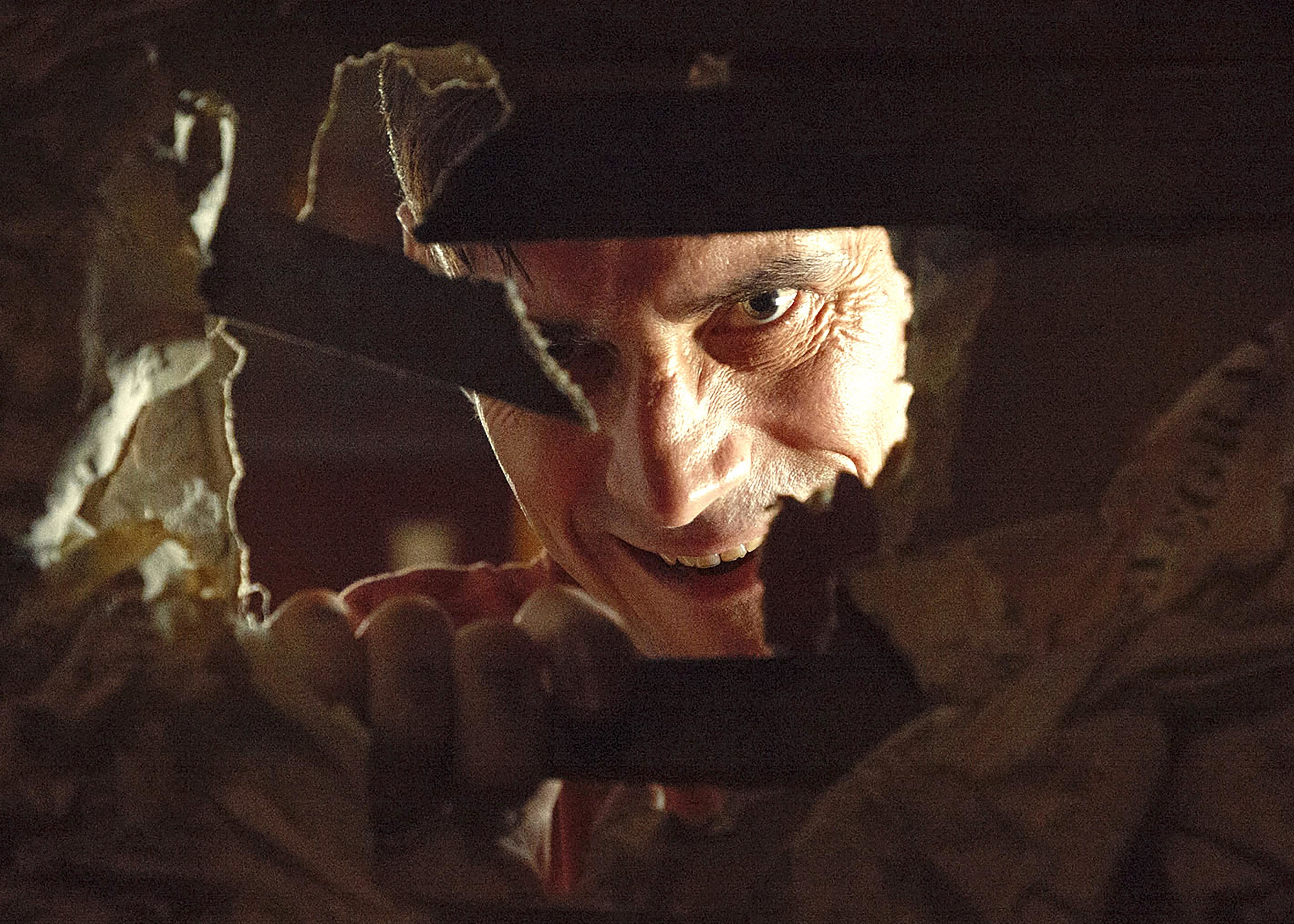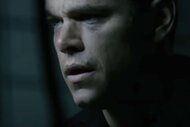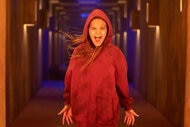Create a free profile to get unlimited access to exclusive videos, sweepstakes, and more!
Girl On The Third Floor director reveals the real-life inspiration for his feminist horror-thriller

By producing a string of critically heralded offerings like Cheap Thrills, Starry Eyes, and We Are Still Here, Travis Stevens has smartly carved out a sterling career in horror. Now, he crafts a creepy thriller of his own with his directorial debut Girl On The Third Floor, a haunted house tale with an unexpectedly feminist twist.
Following the film's world premiere at SXSW, Stevens sat down with SYFY FANGRRLS to share some of the secrets of Girl On The Third Floor, including how its unconventional haunted house tale's real-life inspiration inspired its feminist message.
SPOILERS below for Girl On The Third Floor.
Girl On The Third Floor begins by following Don Koch (Phil Brooks, better known as the former WWE wrestler C.M. Punk), a macho man renovating a rundown mansion for a fresh start with his pregnant wife. But while creepy occurrences soon suggest this house is haunted, it's not the ghosts who are the evil presence here. Don is a bad man who has lied, cheated, and swindled, one who shows no signs of remorse or reform. So when the titular spirit begins to harass him, audiences will likely to root more for Don's demise than his escape.
Typically in horror stories where the hero is being stalked by something supernatural, that hero is a lone woman or a terrified mom, desperate to protect her family. Meanwhile, the stalker is most often male. But Stevens decided to flip the script on this horror gender norms, inspired by the house where the film was shot. "This story takes place in an actual house that has a history of being haunted," he said of the grand mansion in Frankfort, Illinois. "That house actually sits across from a church," he added, "And was reported to be a bordello before. So those dynamics were there. That's all real."
"So, in coming up with the story, it's like what do you explore with those sort of elements in place?" Stevens continued. He considered the lives those women may have led, the emotions of the ghosts said to haunt the house. From there, turning the subgenre's standard "damsel-in-distress" into an "Alpha Male" seemed the logical step, along with making the ghosts who torment him, women who'd suffered at the hands of such men.
"The dynamics of temptation and discipline and sort of the trauma that happened to the women in that house in the reputed stories, and trying to honor that," he said. "So it's in the DNA of the whole thing. Then, you're trying to deliver something that performs in the same way a horror movie is supposed to perform, while moving it forward a little bit and doing something that we haven't seen before."
Still, Stevens didn't want to hit his audience over the head with the film's politics and subversions. "You're trying to walk that line between what is the reality of this situation and what is the trope of this genre," he said. "You're trying to find a way to sort of have those moments that somebody who's aware of them will pick up on, somebody who's not, it will still feel true."
"I just want people to enjoy a hard-R rated horror movie again," Stevens concluded. "That is, hard R because it's fun and wet, and weird, and crazy. And while they're enjoying that experience, we're slowly encouraging them to maybe be a more decent human being."


























